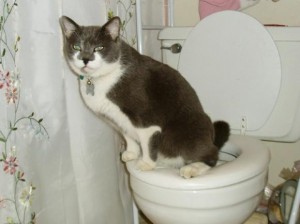Avoid Plumbing Problems: Don't Flush Cat Poop Down Your Toilet - Expert Guidance
Avoid Plumbing Problems: Don't Flush Cat Poop Down Your Toilet - Expert Guidance
Blog Article
This post down below pertaining to How to Dispose of Cat Poop and Litter Without Plastic Bags is rather attention-grabbing. Read it yourself and figure out what you think of it.

Introduction
As pet cat owners, it's essential to bear in mind exactly how we deal with our feline friends' waste. While it might seem hassle-free to purge cat poop down the commode, this method can have detrimental effects for both the environment and human wellness.
Alternatives to Flushing
The good news is, there are much safer and much more responsible means to get rid of pet cat poop. Take into consideration the complying with options:
1. Scoop and Dispose in Trash
The most typical method of taking care of cat poop is to scoop it right into a biodegradable bag and throw it in the trash. Be sure to make use of a devoted clutter scoop and throw away the waste quickly.
2. Usage Biodegradable Litter
Opt for eco-friendly cat litter made from products such as corn or wheat. These trashes are eco-friendly and can be securely taken care of in the garbage.
3. Hide in the Yard
If you have a backyard, take into consideration burying cat waste in an assigned area away from veggie yards and water sources. Make sure to dig deep adequate to avoid contamination of groundwater.
4. Install a Pet Waste Disposal System
Purchase a pet dog garbage disposal system especially created for pet cat waste. These systems make use of enzymes to break down the waste, decreasing odor and ecological influence.
Health Risks
In addition to environmental worries, flushing pet cat waste can likewise pose health dangers to human beings. Pet cat feces may include Toxoplasma gondii, a parasite that can trigger toxoplasmosis-- a potentially severe ailment, specifically for pregnant women and individuals with weakened body immune systems.
Ecological Impact
Purging pet cat poop presents harmful pathogens and parasites right into the water supply, posing a significant risk to aquatic environments. These pollutants can adversely affect aquatic life and compromise water high quality.
Final thought
Liable pet dog possession prolongs beyond offering food and shelter-- it also involves proper waste management. By avoiding purging feline poop down the commode and selecting alternate disposal techniques, we can reduce our environmental impact and shield human health and wellness.
Why Can’t I Flush Cat Poop?
It Spreads a Parasite
Cats are frequently infected with a parasite called toxoplasma gondii. The parasite causes an infection called toxoplasmosis. It is usually harmless to cats. The parasite only uses cat poop as a host for its eggs. Otherwise, the cat’s immune system usually keeps the infection at low enough levels to maintain its own health. But it does not stop the develop of eggs. These eggs are tiny and surprisingly tough. They may survive for a year before they begin to grow. But that’s the problem.
Our wastewater system is not designed to deal with toxoplasmosis eggs. Instead, most eggs will flush from your toilet into sewers and wastewater management plants. After the sewage is treated for many other harmful things in it, it is typically released into local rivers, lakes, or oceans. Here, the toxoplasmosis eggs can find new hosts, including starfish, crabs, otters, and many other wildlife. For many, this is a significant risk to their health. Toxoplasmosis can also end up infecting water sources that are important for agriculture, which means our deer, pigs, and sheep can get infected too.
Is There Risk to Humans?
There can be a risk to human life from flushing cat poop down the toilet. If you do so, the parasites from your cat’s poop can end up in shellfish, game animals, or livestock. If this meat is then served raw or undercooked, the people who eat it can get sick.
In fact, according to the CDC, 40 million people in the United States are infected with toxoplasma gondii. They get it from exposure to infected seafood, or from some kind of cat poop contamination, like drinking from a stream that is contaminated or touching anything that has come into contact with cat poop. That includes just cleaning a cat litter box.
Most people who get infected with these parasites will not develop any symptoms. However, for pregnant women or for those with compromised immune systems, the parasite can cause severe health problems.
How to Handle Cat Poop
The best way to handle cat poop is actually to clean the box more often. The eggs that the parasite sheds will not become active until one to five days after the cat poops. That means that if you clean daily, you’re much less likely to come into direct contact with infectious eggs.
That said, always dispose of cat poop in the garbage and not down the toilet. Wash your hands before and after you clean the litter box, and bring the bag of poop right outside to your garbage bins.
https://trenchlesssolutionsusa.com/why-cant-i-flush-cat-poop/

I hope you liked our excerpt about Don’t flush cat feces down the toilet. Thank you so much for finding the time to read through our piece of content. In case you enjoyed reading our blog post kindly make sure you remember to pass it around. Thanks so much for your time spent reading it.
Give Me A Quote! Report this page